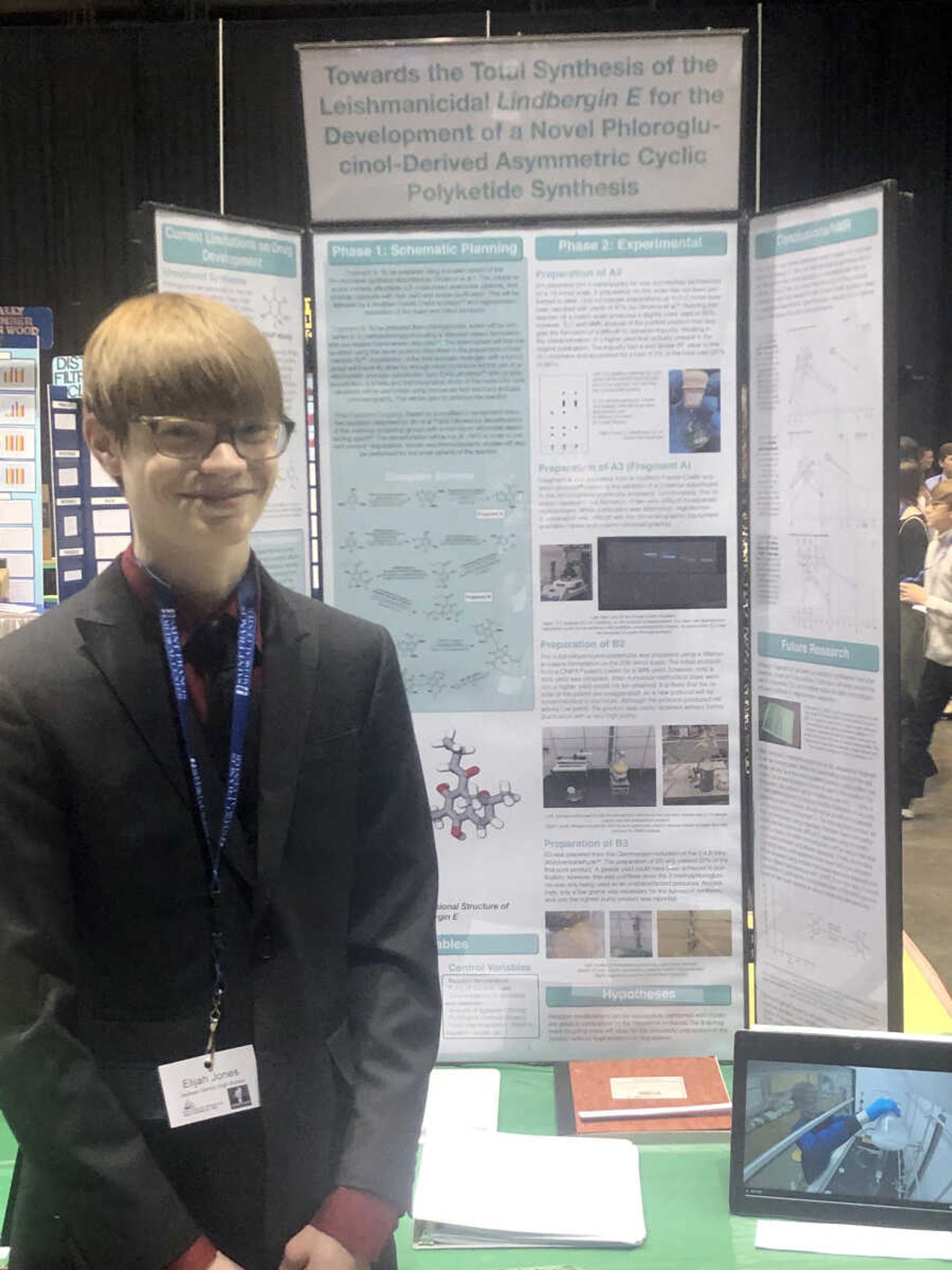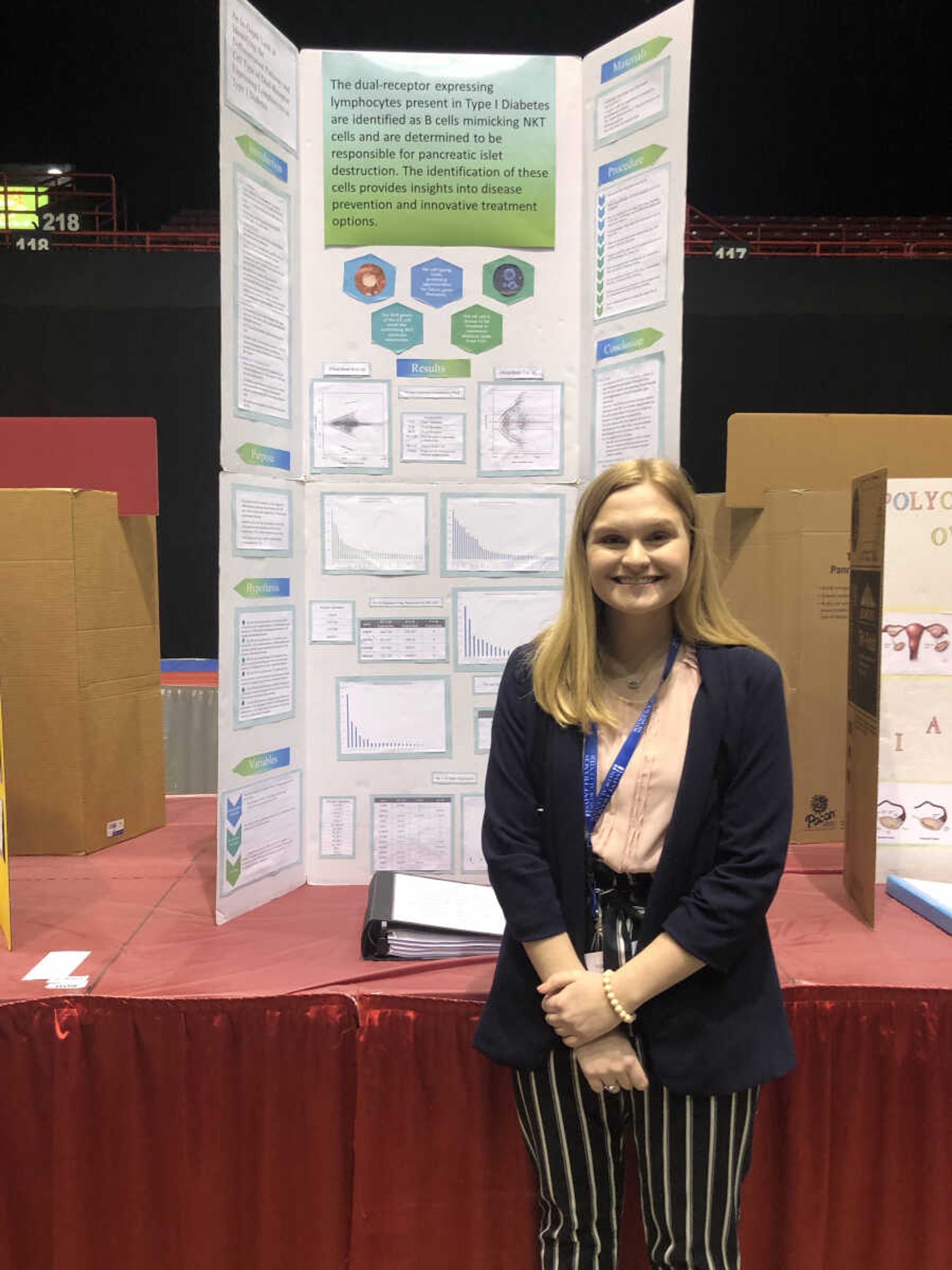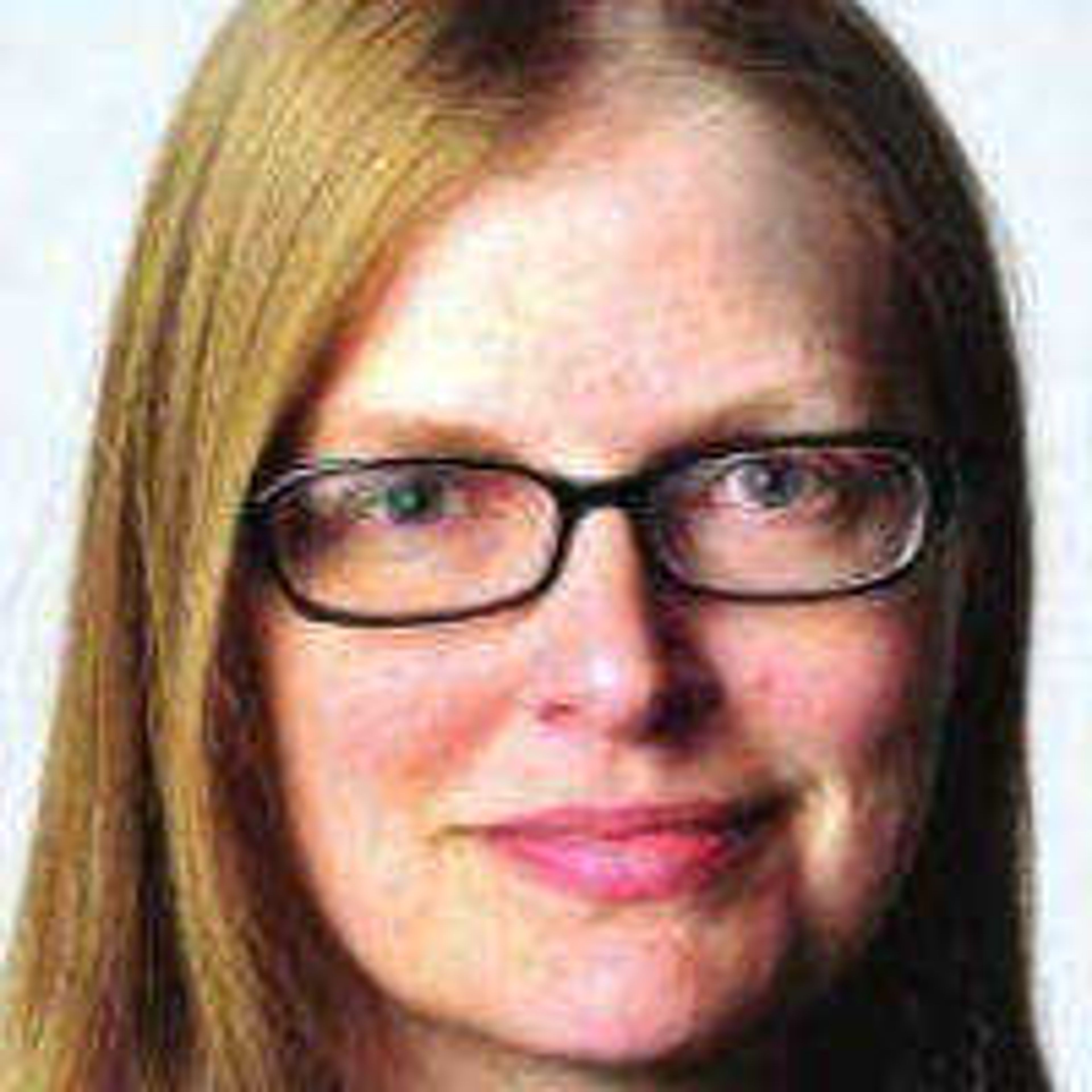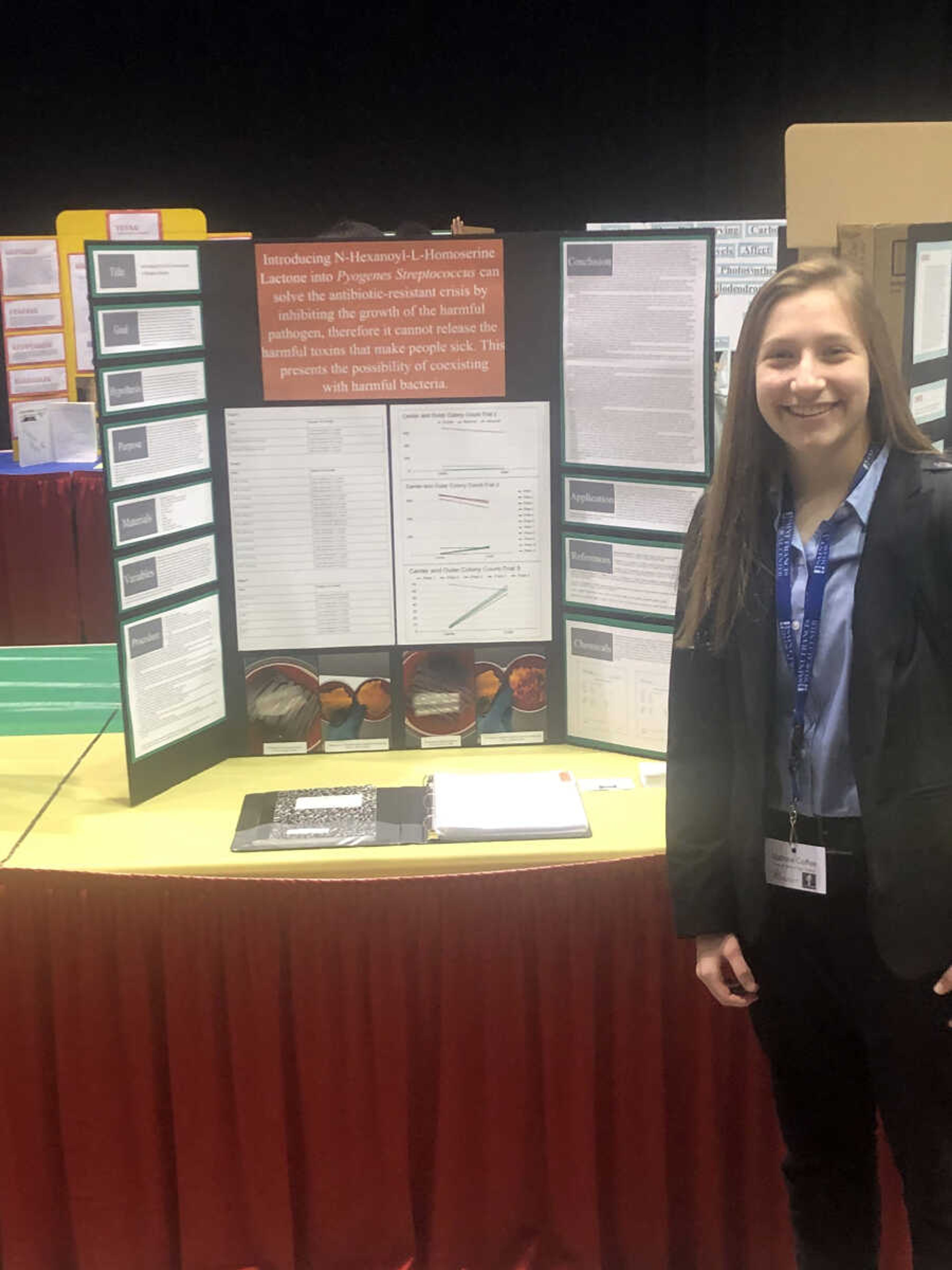After Tuesday’s 64th annual Southeast Missouri Regional Science Fair in Cape Girardeau, three students are taking their projects to an international competition in Anaheim, California.
Two students from Jackson High School, Mallorie Coffee and Elijah Jones, both in 11th grade, earned top spots, and Hayti (Missouri) High School senior Hannah Davis will join them at the competition.
Leanne Thele, science teacher at Jackson High School, said this is her second year taking students to the regional science fair.
“I took Eli (Jones) last year,” Thele said. “I thought, ‘This year, we have to do more.’”
Thele took 31 students — 19 projects.

“My kiddos are top notch and work super hard,” Thele said.
Coffee’s project dealt with heading off antibiotic resistance — a worldwide crisis, she said — by interrupting pathenogenic bacteria’s communication.
Strep throat is caused by a bacterium lurking in the back of a host’s throat, multiplying and monitoring itself simultaneously, and when it’s poised to make the host sick, it sends a “go” signal to release toxins.
So, Coffee said, what would happen if that signal was interrupted?
With her experiment, she was able to prove a reaction between the chemicals tested and the bacteria, she said.
“This opens the door for researchers,” she said — and opens a potential pathway to treating bacterial infections with non-antibiotic methods.

Jones’ experiment dealt with synthetic organic chemistry, and synthesis of a molecule — lindbergin E — that could be used to fight disease in developing nations.
He worked with Sajan Silwal at Southeast Missouri State University, Jones said, who was a great mentor.
“I have very profound results,” Jones said.
The molecule is complex, he said, and while lindbergin E could be extracted from plant materials, synthesis would be more efficient, cheaper and more readily available in underserved areas of the world.
And it’s important to minimize the number of steps required in the synthesis process — it keeps costs down to have seven steps rather than 500, for example, he said.
Once this molecule is fully synthesized, he said, it could lead to future treatments.
Jones attended the 2019 international competition as an observer, and said it was an incredible experience, with recruiters for top universities and cutting-edge tech companies scouting students.
Tiska Rodgers, science teacher at Hayti High School, said the science fair is the best thing for her students.
Rodgers’ student, Hannah Davis, earned second place overall with her project on diabetes research.
Rodgers said the difficulty Davis faced was getting the data she needed.
To do blood work, the lab would have needed biological safety level 3. The highest is 4, and that’s the province of the Centers for Disease Control and Prevention and the World Health Organization, Rodgers said.
So, Davis, Rodgers and another student took another route: They participated in a pilot program in St. Louis using biological data from other experiments already completed.
“She grabbed the data and ran millions of DNA sequences,” Rodgers said.
Those results, Davis put into an Excel spreadsheet, which crashed multiple times, Rodgers said, due to the quantity of data.
“She had to determine what it meant, what was significant,” Rodgers said.
And, if Davis has found the markers she thinks she’s found, “it will open up gene therapy for Type 1 diabetes, cancer — it has ramifications for a lot of diseases.”
Davis’ work is being peer reviewed by researchers at Saint Louis University, Rodgers added. That could lead to a publication.
“I am very proud of my students,” Rodgers said. “Out of their comfort zone is one thing, but to step up and put in the work, they have to make that choice. There’s so much competition, especially this year.”
Both teachers said their students have worked on their projects at least since August, and have put in many hours beyond regular schoolwork.
“This is my 16th year taking kids to science fairs,” Rodgers said, who is in her second year at Hayti. “It helps kids realize they are smart, and can do this work. They have to believe in themselves. All of us teachers believe in them.”
Rodgers and Thele were both honored as Top Teachers at Tuesday’s science fair, as well.
All science fair winners will be posted at www.semo.edu/sciencefair.
Connect with the Southeast Missourian Newsroom:
For corrections to this story or other insights for the editor, click here. To submit a letter to the editor, click here. To learn about the Southeast Missourian’s AI Policy, click here.








